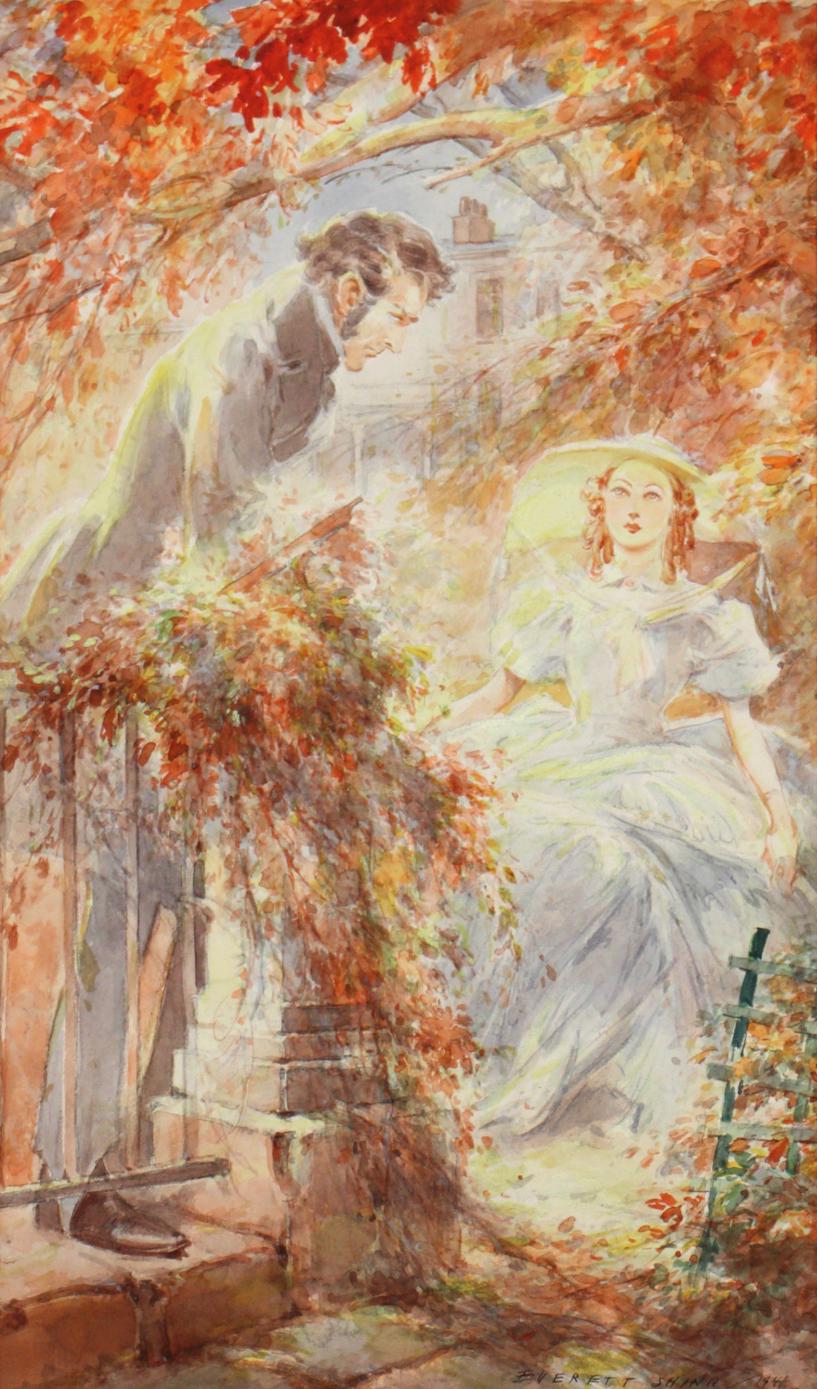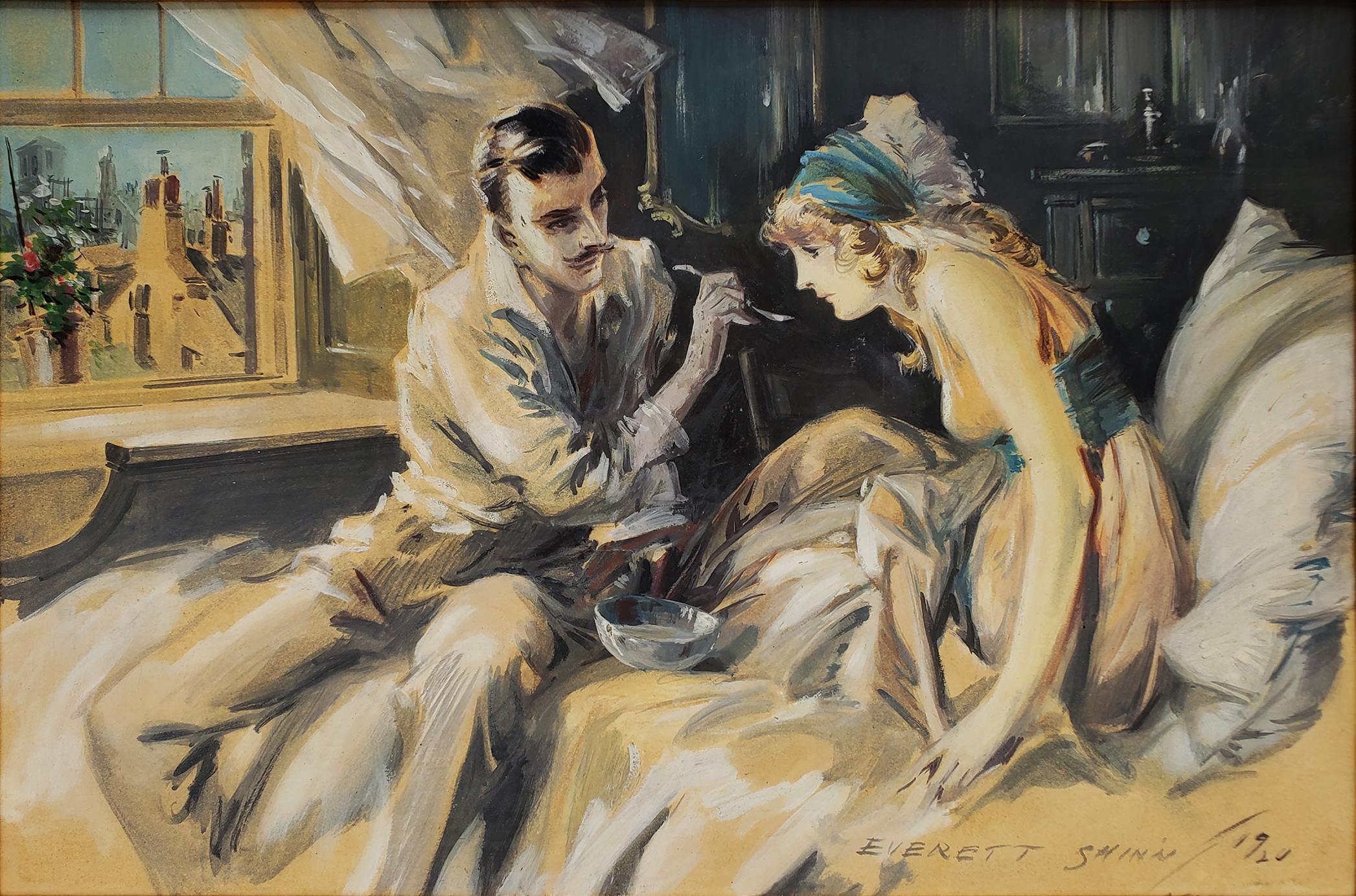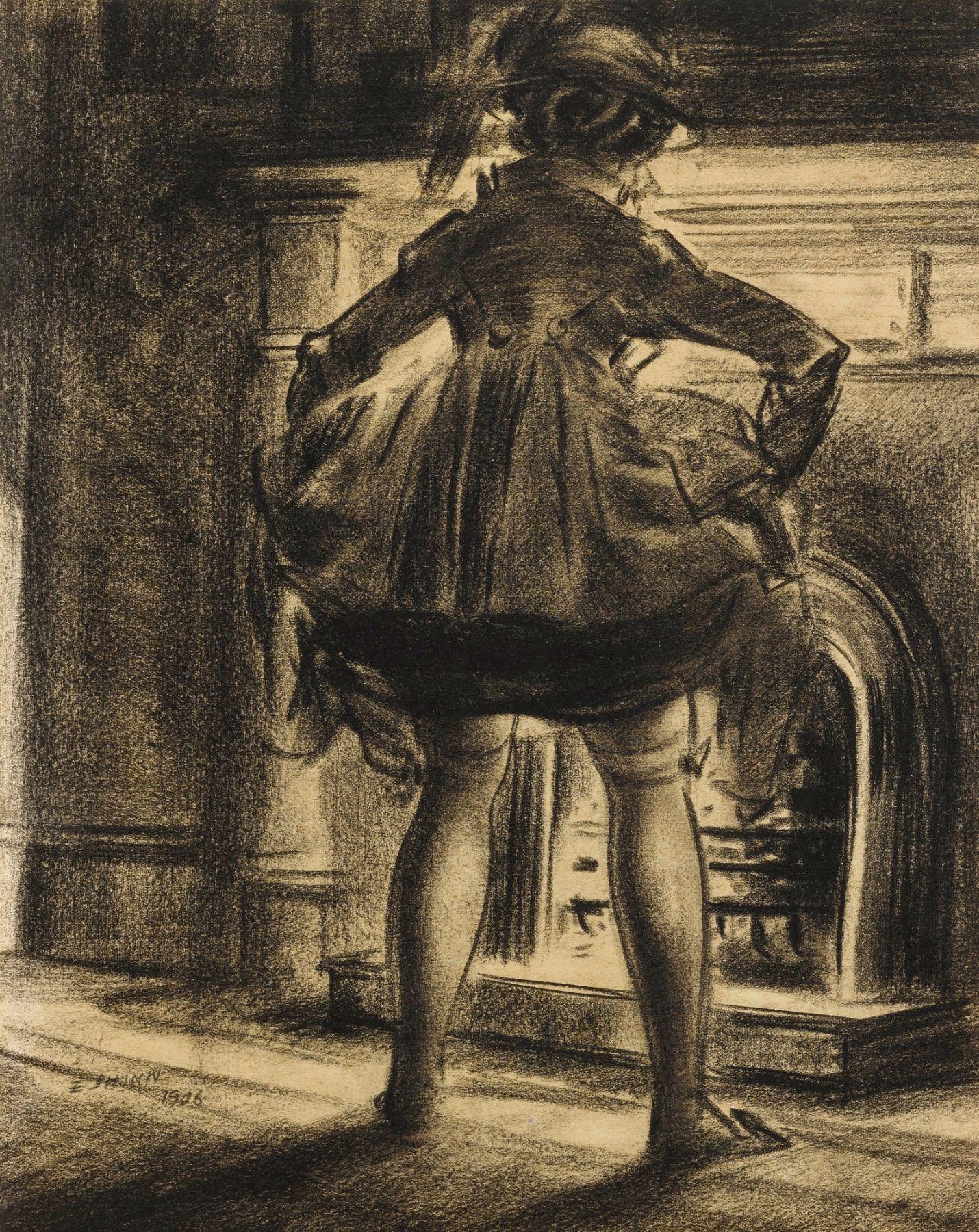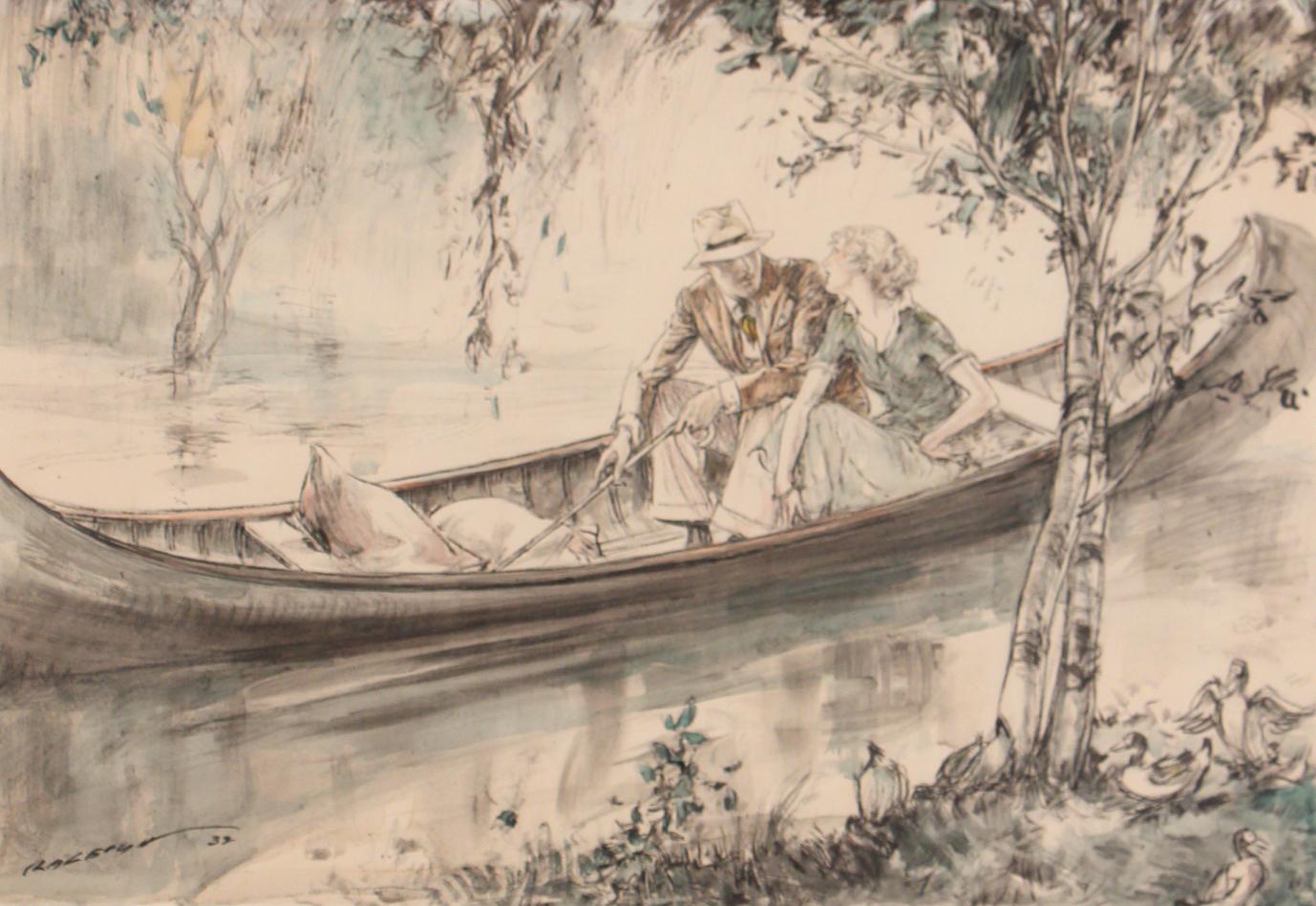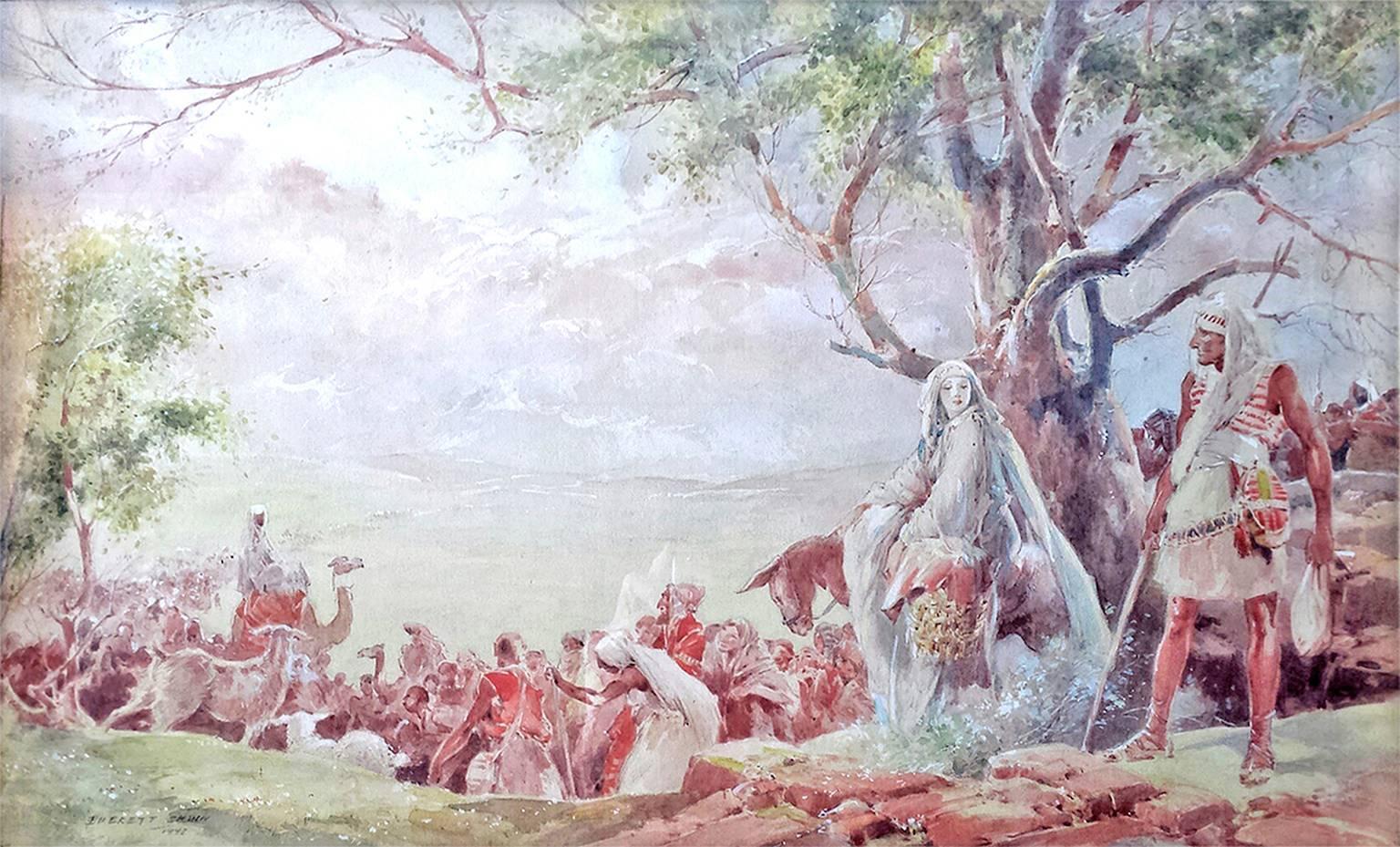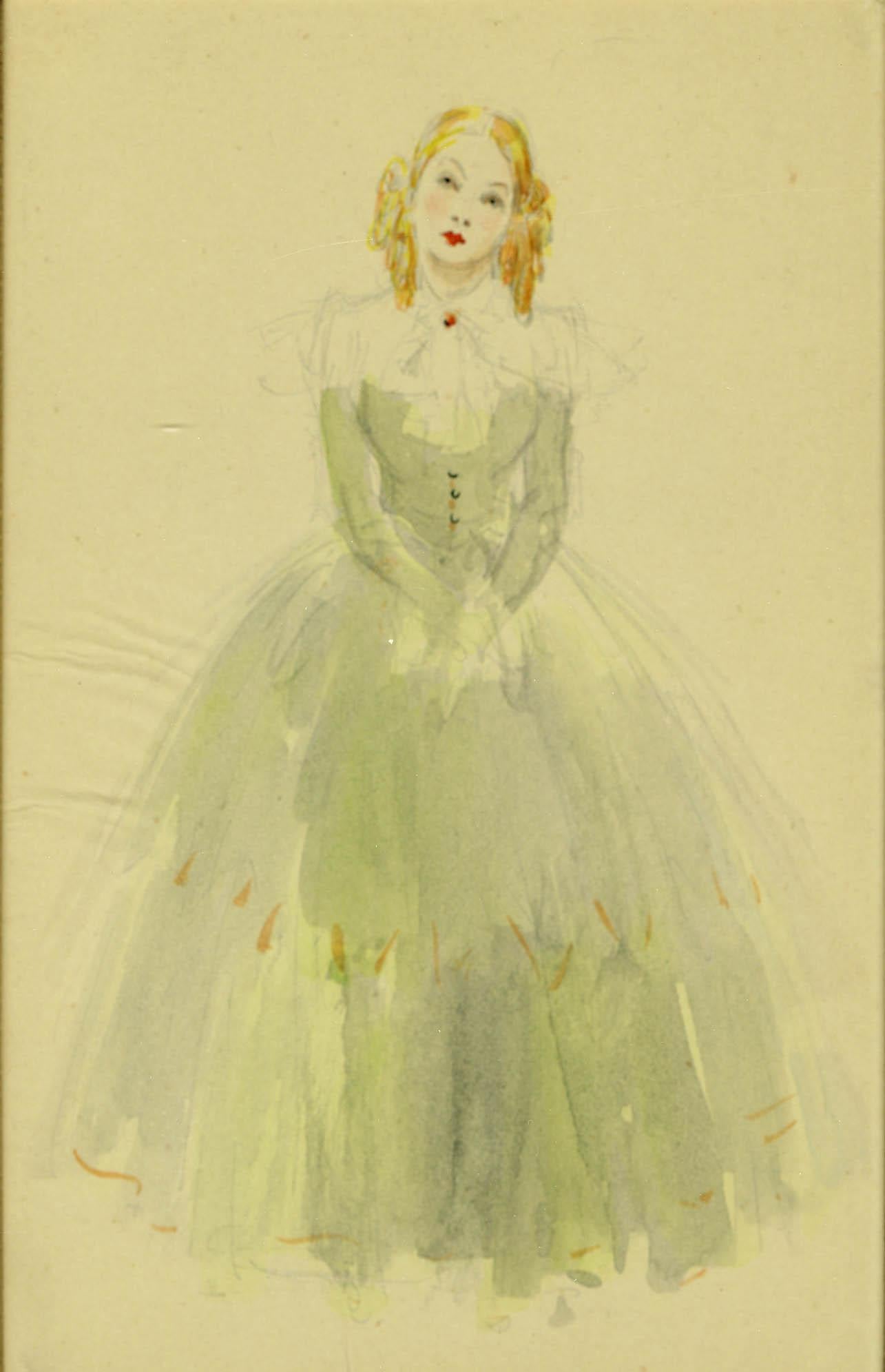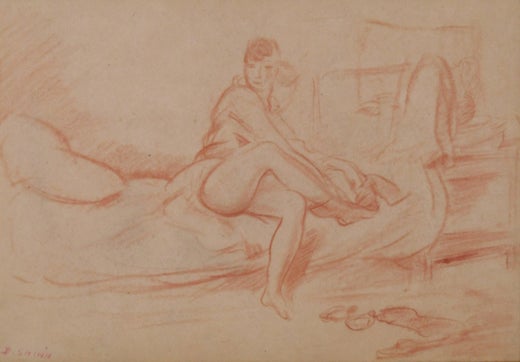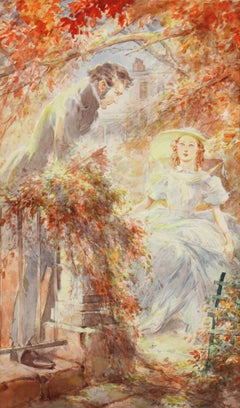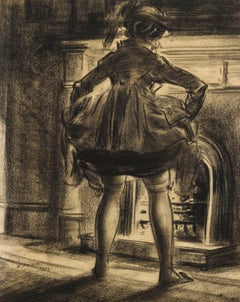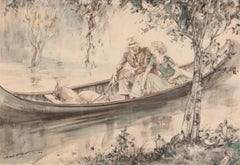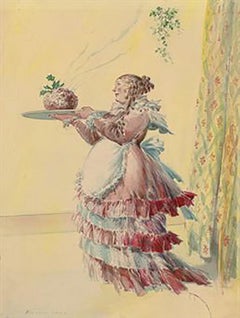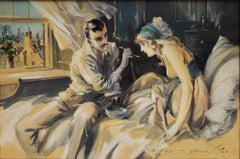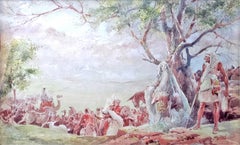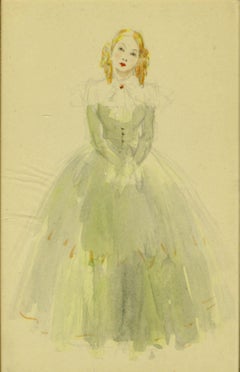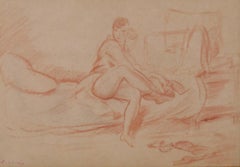Items Similar to Couple Sitting Among Lanterns, Cover for Vanity Fair
Want more images or videos?
Request additional images or videos from the seller
1 of 6
Everett ShinnCouple Sitting Among Lanterns, Cover for Vanity Fair1916
1916
$169,000
£128,125.23
€147,694.49
CA$238,009.38
A$263,934.81
CHF 138,678.16
MX$3,224,834.71
NOK 1,735,052.97
SEK 1,628,643.65
DKK 1,102,568.34
About the Item
Medium: Pastel, Gouache, and Black Crayon on Paperboard
Sight Size 22.88" x 17.50", Framed 31.75" x 26.50"
Signature: Signed EVERETT SHINN and Dated
Vanity Fair Cover, June 1916
Everett Shinn
Everett Shinn, a future member of the Eight and remarkable, rather theatrical personality was born at Woodstown, New Jersey in 1873. Even more recent sources give 1876 as the year of Everett Shinn's birth (Zurier, Snyder, and Mecklenburg, 1995, p. 224) but the artist usually lied about his age to appear younger than he actually was. Edith DeShazo (1974, errata sheet) claimed that information from family members established the date of November 6, 1876 as Shinn's birthday. But if this is true, he would have enrolled at the Spring Garden Institute in Philadelphia to study industrial art at the age of twelve. Born to a Quaker named Isaiah Conklin Shinn and Josephine Ransley Shinn, Everett was their third child. He enjoyed a happy childhood as an undisciplined boy fond of sweets, acrobatics, and the circus (DeShazo, 1974, pp. 15-17). Shinn opted for the Pennsylvania Academy of the Fine Arts for instruction in the fall of 1893, and began as a staff artist for the Philadelphia Press. At that time William Glackens was working there as well, while John Sloan was at the Inquirer. A year later, Glackens was at the Press, and also, in 1894, George Luks joined the staff there. As DeShazo explained (1974, p. 29), "the Press art department became a meeting place for men both on the staff and off with similar artistic and literary interests." Members of the same group also met at Robert Henri's studio. By 1897, Shinn was in New York, working for the New York World where Luks had been for about a year. The rest of the "Philadelphia Four" (artist-reporters) would follow them before long. Shinn spent much of 1898 hounding the offices of Harper's until finally, the editor and publisher, Colonel George Harvey saw his portfolio, then commissioned a view of the Old Metropolitan Opera House in a snowstorm. The pastel appeared about a year later in the February 17th issue of Harper's Weekly, in 1900. Meanwhile, Shinn kept busy with decorative work (murals, screens, and door panels) at private residences and even in Trenton, New Jersey's City Hall. In 1899, the Boussod-Valadon Galleries gave Shinn his first one-man show. He continued to carry out commissions for illustrations (see Bullard, 1968). Shinn began exhibiting at the Pennsylvania Academy (1899-1908) and at the Art Institute of Chicago (1903-43).
About the Seller
5.0
Recognized Seller
These prestigious sellers are industry leaders and represent the highest echelon for item quality and design.
Platinum Seller
Premium sellers with a 4.7+ rating and 24-hour response times
Established in 1995
1stDibs seller since 2016
134 sales on 1stDibs
Typical response time: 1 hour
- ShippingRetrieving quote...Shipping from: Fort Washington, PA
- Return Policy
Authenticity Guarantee
In the unlikely event there’s an issue with an item’s authenticity, contact us within 1 year for a full refund. DetailsMoney-Back Guarantee
If your item is not as described, is damaged in transit, or does not arrive, contact us within 7 days for a full refund. Details24-Hour Cancellation
You have a 24-hour grace period in which to reconsider your purchase, with no questions asked.Vetted Professional Sellers
Our world-class sellers must adhere to strict standards for service and quality, maintaining the integrity of our listings.Price-Match Guarantee
If you find that a seller listed the same item for a lower price elsewhere, we’ll match it.Trusted Global Delivery
Our best-in-class carrier network provides specialized shipping options worldwide, including custom delivery.More From This Seller
View All"The Mystery of Edwin Drood"
By Everett Shinn
Located in Fort Washington, PA
Medium: Watercolor on Board
Signature: Signed and Dated Lower Right
An illustration from Charles Dickens' "The Mystery of Erwin Drood".
Category
1940s Figurative Drawings and Watercolors
Materials
Watercolor, Board
By the Fire
By Everett Shinn
Located in Fort Washington, PA
Medium: Charcoal on Paper
Signature: Signed Lower Left
Category
Early 1900s Interior Drawings and Watercolors
Materials
Paper, Charcoal
"Full Personality" Story Illustration, Saturday Evening Post, 1933
By Henry Raleigh
Located in Fort Washington, PA
"Full Personality," by John Taintor Foote and illustrated by Henry P. Raleigh for the Saturday Evening Post, January 28, 1933.
"I've come to drown myself -- will you help?"
Henry Patrick Raleigh...
Category
1930s Romantic Paintings
Materials
Board, Ink, Watercolor
"A Christmas Carol"
By Everett Shinn
Located in Fort Washington, PA
Signature: Signed Lower Left
Bringing in the dessert: An illustration from Charles Dickens'' "A Christmas Carol".
Category
20th Century Figurative Drawings and Watercolors
Materials
Watercolor, Board, Pencil
Illustration for the book Toby Tyler or Ten Weeks with a Circus
By Everett Shinn
Located in Fort Washington, PA
This illustration was used in Toby Tyler or Ten Weeks with a Circus by James Otis. Published in 1937 by The John C. Winston Company - "The Children's Bookshelf" series. The book features wonderful color plates and black & white illustrations by Everett Shinn.
The full caption reads: "Toby tried very hard to go to sleep."
Toby Tyler tells the story of a ten-year-old orphan who runs away from a foster home to join the traveling circus only to discover his new employer is a cruel taskmaster. Toby's friend, Mr. Stubbs the chimpanzee, reinforces the consequences of what happens when one follows one's natural instincts rather than one's intellect and conscience, a central theme of the novel.
Date: 1937
Medium: Watercolor on Paper
Dimensions: 18.00" x 12.50"
Signature: Signed Lower Right
Toby Tyler Book Illustration
Exhibitions: Norman Rockwell Museum...
Category
1930s Figurative Drawings and Watercolors
Materials
Paper, Watercolor
Couple Beside a Tree
By Henry Raleigh
Located in Fort Washington, PA
Couple standing beside a tree
Signed lower right
Henry Patrick Raleigh was one of the most prolific of all our illustrators. In spite of this...
Category
20th Century Romantic Paintings
Materials
Ink, Paper, Watercolor
You May Also Like
Hearts Unreasoning, by Sarah Bernhardt The First of Six Romances of the French S
By Everett Shinn
Located in Miami, FL
Hearts Unreasoning, by Sarah Bernhardt The First of Six Romances of the French Stage -
McCall’s Magazine December 1920 interior illustration. The work is related to Shinn's fam...
Category
1920s American Impressionist Figurative Paintings
Materials
Oil, Board
$15,200 Sale Price
20% Off
Flight into Egypt
By Everett Shinn
Located in Miami, FL
Meticulously rendered in beautiful pastels colors account of biblical story.
Doyle New York
Category
1940s American Realist Figurative Drawings and Watercolors
Materials
Gouache, Pencil, Watercolor
$10,000 Sale Price
20% Off
Girl with the Golden Curls
By Everett Shinn
Located in Fairlawn, OH
Girl with the Golden Curls
Watercolor, c. 1895
Unsigned
Provenance: Davis Galleries, New York (see photo of label on reverse)
Condition: Mounted to support by the artist
...
Category
1890s American Impressionist Figurative Drawings and Watercolors
Materials
Watercolor
Untitled (Woman Removing Her Stockings)
By Everett Shinn
Located in Fairlawn, OH
Untitled (Woman Removing Her Stockings)
Conte crayon on paper. c. 1905
Signed lower right: E Shinn
Provenance:
James Graham & Sons, New York (labels)
Ronald C. Sloter, Columbus
Colum...
Category
Early 1900s Ashcan School Nude Drawings and Watercolors
Materials
Conté
Woman Pulling on a Slip
By Everett Shinn
Located in Fairlawn, OH
Woman Pulling on a Slip
Conte on paper, c. 1910
Signed lower right: "E. Shinn" (see photo of legs, signature on right)
Provenance:
Estate of the Artist (see label)
Graham Gallery, N...
Category
1910s Ashcan School Nude Drawings and Watercolors
Materials
Conté
Court Jester - Golden Age of Illustration
By Everett Shinn
Located in Miami, FL
Meticulously and carefully rendered period piece that reenact this magicaly moment. Works on Paper, Gouache, Watercolor over traces of pencil heightened with white on illustration ...
Category
1940s American Realist Figurative Drawings and Watercolors
Materials
Watercolor
